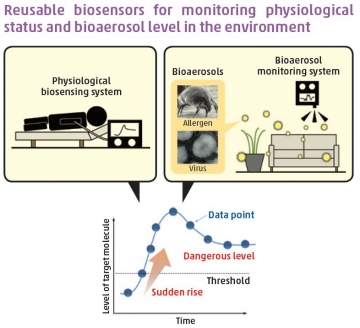Physiological and environmental biosensing for preemptive and preventive medicine

Koji Toma,
Assistant Professor of Biomedical Devices and Instrumentation at TMDU
After working at AIT Austrian Institute of Technology as a research fellow and obtaining my PhD from the University of Natural Resources and Life Sciences, Vienna, Austria in 2012, I worked at Forschungszentrum Jülich in Germany as a postdoctoral fellow and Humboldt research fellow. In 2014, I started my academic career as an Assistant Professor of Biomedical Devices and Instrumentation at TMDU.
My current research focuses on biosensors for medical applications, in particular preemptive and preventive medicine. A biosensor is a sensor device especially designed for selective detection of chemical or biological substances by utilizing biologically derived materials, for example, antibodies, enzymes and receptors. In preemptive and preventive medicine, the temporal information of a target molecule is important to accurately understand the risk and status of diseases. However, biosensors are not always good at continuous sensing — for example, immunosensors, which exploit antibodies to capture antigens. This deficit exists because those biologically derived materials have been denatured in a harsh environment, such as in a low or high pH solution, in order to regenerate a biosensor for subsequent measurement.
In my current research, I am aiming to overcome such obstacles and develop biosensors that can be used repeatedly for physiological and environmental biosensing. The outcome of this research will pave the way for a novel technique that helps to predict and eliminate the risk of disease development by notifying users of a sudden rise in disease-related biomarker levels in their bodies or a high bioaerosol level in their residential environments.

Predict and eliminate the risk of disease development from 2D (concentration & temporal) information of target chemical or biological molecules.

